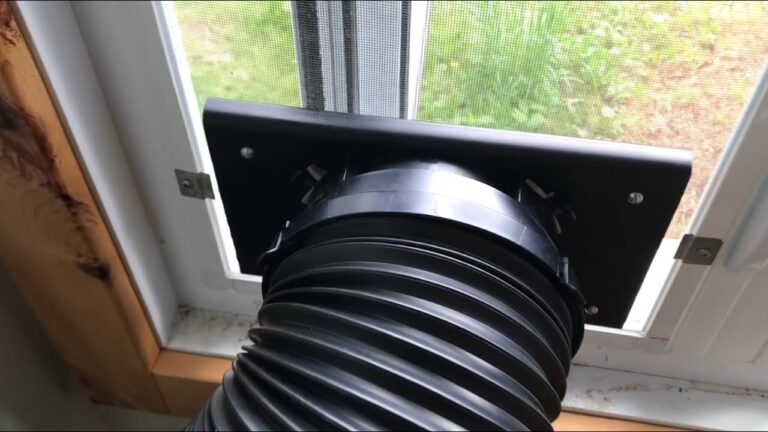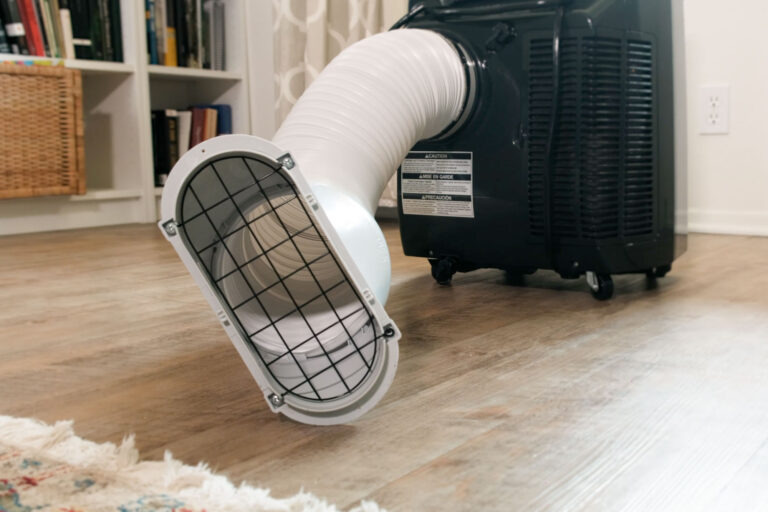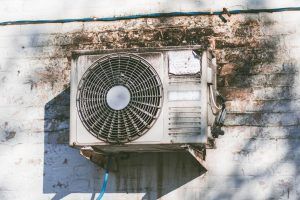Air Conditioner Float Switch Reset: Quick and Easy Guide
To reset an air conditioner float switch, you need to remove the water from the emergency drain pan, which can be done using a shop vacuum.
Understanding The Air Conditioner Float Switch
The air conditioner float switch is a safety mechanism that shuts off your AC unit when the water level in the pan gets too high. If you need to reset the float switch, you can do so by unthreading the bottom and letting out any water in that area.
What Is An Air Conditioner Float Switch?
- An air conditioner float switch is a safety device that helps prevent water from overflowing or leaking from the AC unit.
- It is usually located in the condensate drain pan of the air conditioner.
- The float switch consists of a small plastic or metal float that moves up and down based on the water level in the drain pan.
- When the water level rises too high, the float triggers the switch, signaling the AC unit to shut off and prevent further water damage.
How Does The Float Switch Work?
- The float switch operates on a simple mechanism of buoyancy.
- When there is no water in the condensate drain pan, the float rests in a position that allows the AC unit to run normally.
- As water accumulates in the drain pan, the float begins to rise with the increasing water level.
- Once the water level reaches a certain point, the float switch is triggered, breaking the circuit and shutting off the AC unit.
- This prevents further water from overflowing or damaging the AC system until the drain pan is emptied and the float returns to its resting position.
The Purpose Of The Float Switch:
- The main purpose of an air conditioner float switch is to prevent water damage.
- It helps protect your home from potential water leaks by shutting off the AC unit when the water level in the drain pan becomes too high.
- By stopping the AC unit from running, it prevents further condensation and potential overflow.
- Furthermore, the float switch also alerts homeowners or HVAC technicians about a clogged or faulty condensate drain line.
- In case of a clog, the float switch will trigger and indicate the need for maintenance or repair to avoid potential water damage or mold growth.
Remember that regular maintenance and periodic checking of the float switch are crucial to ensure optimal functioning and prevent any water-related issues with your air conditioner.
Troubleshooting Common Issues With The Float Switch
If you’re experiencing issues with your air conditioner’s float switch, learn how to reset it effectively. Discover the simple steps to troubleshoot and solve common problems with your float switch, ensuring optimal performance for your AC unit.
Why Does The Float Switch Trip?
The float switch in an air conditioner is designed to prevent water damage by shutting off the AC unit when the water level in the condensate drain pan gets too high. There are several reasons why the float switch may trip, including:
- Clogged drain lines: A blocked or clogged drain line can cause water to accumulate in the condensate pan, triggering the float switch.
- Dirty air filters: When air filters are clogged with dust and debris, it restricts airflow, causing the evaporator coil to freeze. As the coil melts, excess condensation can overwhelm the drain pan and activate the float switch.
- Improper installation: If the float switch is not installed correctly or if it is positioned too high in the drain pan, it may trip prematurely.
- Damaged or malfunctioning switch: Over time, the float switch mechanism may wear out or become damaged, leading to false activations.
What Causes The Water Level To Rise?
Understanding the factors that contribute to the rising water level in the condensate drain pan can help troubleshoot and prevent float switch tripping. Here are some common culprits:
- High humidity levels: In areas with high humidity, the air conditioner removes more moisture from the air, resulting in increased condensate production and potential overflow.
- Clogged condensate drain line: Accumulated dirt, debris, or algae growth can obstruct the drain line, causing water to back up into the drain pan.
- Insufficient condensate removal: If the condensate pump is not working correctly or the drain line does not have the proper slope, water may pool in the drain pan and activate the float switch.
How To Unclog A Float Switch
When the float switch trips due to a clogged drain line, you can try unclogging it before calling a professional. Here’s how:
- Turn off the air conditioner: Shut off the power to the AC unit to avoid any accidents or electrocution.
- Locate the float switch: The float switch is typically found in the condensate drain pan, next to the evaporator coil.
- Check for debris: Remove any visible debris or dirt from the float switch, drain line, and drain pan.
- Clean the drain line: Pour a mixture of vinegar and warm water down the drain line to dissolve any clogs or buildup. Alternatively, you can use a wet-dry vacuum to suction out the blockage.
- Test the float switch: After cleaning the drain line, pour a small amount of water into the drain pan. If the float switch is functioning properly, it should return to its original position, indicating that the water level is normal.
- Restore power to the AC unit: Once you have unclogged the float switch and confirmed that it’s working correctly, you can turn the power back on and monitor the system to ensure proper drainage.
Remember, if troubleshooting and unclogging the float switch doesn’t resolve the issue or if you’re unsure of how to proceed, it’s best to contact a professional HVAC technician for assistance.
Resetting The Air Conditioner Float Switch
Resetting the air conditioner float switch is crucial to ensure proper functioning of your AC unit. When the water level in the pan exceeds a certain point, the switch trips and sends a message to the unit to shut off.
By resetting the float switch, you can resume the cooling process and prevent any further issues.
Step-By-Step Guide To Resetting The Float Switch:
- Turn off the air conditioner: Before attempting to reset the float switch, make sure to turn off the air conditioner to avoid any potential electrical accidents.
- Locate the float switch: The float switch is usually located on the condensate drain pan, which is typically found near the indoor air handler unit.
- Access the switch: Remove the access panel of the air handler unit to gain access to the float switch.
- Lift the float: Check if the float switch is tripped or activated. If it is, gently lift the float to reset it.
- Verify proper function: While the float is lifted, turn on the air conditioner and observe if the unit starts cooling. If it does, it means the float switch has been successfully reset.
- Release the float: After verifying the unit’s functionality, carefully release the float, allowing it to return to its normal position.
- Replace the access panel: Securely place the access panel back onto the air handler unit.
- Turn on the air conditioner: Finally, turn on the air conditioner and ensure it continues to cool properly.
Tools Needed For Resetting The Float Switch:
- Screwdriver: You may need a screwdriver to remove the access panel of the air handler unit.
Safety Precautions To Take:
- Wear protective gear: It is always recommended to wear protective gloves and safety glasses when working on any electrical components.
- Disconnect power supply: Prior to resetting the float switch, switch off the air conditioner and disconnect its power supply to prevent any electrical shocks.
- Avoid applying excessive force: When lifting the float to reset it, be cautious and avoid applying excessive force, as it may damage the switch or other components.
- Consult a professional if needed: If you’re unsure about the process or encounter any difficulties, it’s best to consult a professional HVAC technician to avoid any further complications.
Resetting the air conditioner float switch is a simple and necessary step to ensure the proper functioning of your cooling system. By following the step-by-step guide and taking necessary safety precautions, you can easily reset the float switch and get your air conditioner back up and running efficiently.

Credit: www.amazon.com
Frequently Asked Questions On Air Conditioner Float Switch Reset
What Causes Ac Float Switch To Trip?
The AC float switch trips when the water level in the pan rises above a certain point, causing the switch mechanism to activate. This sends a signal to the AC unit to shut off and stop condensation.
How Do You Unclog A Float Switch?
To unclog a float switch, disconnect the wires leading from the switch and connect them together using a wire nut or electrical tape if needed.
How Do You Test An Ac Float Switch?
To test an AC float switch, disconnect the wires and lift the float to see if the unit shuts off.
How Do You Bypass The Ac Float Switch?
To bypass the AC float switch, disconnect the wires leading from the switch and connect them together using a wire nut or electrical tape.
Conclusion
If your air conditioner’s float switch has been tripped and you need to reset it, there are a few important steps to follow. First, you should remove any excess water from the emergency drain pan using a shop vacuum. Once the water has been cleared, the float switch can be reset.
Remember, the float switch is activated when the level of water in the pan rises above a certain point, causing the mechanism to trip. By resetting the switch, you can ensure that your AC unit will continue to function properly.
It’s a simple solution to a common issue that can save you from further problems down the line. So, if you find yourself with a tripped float switch, don’t panic. With a little bit of knowledge and the right tools, you can reset the switch and get your air conditioner back up and running in no time.





